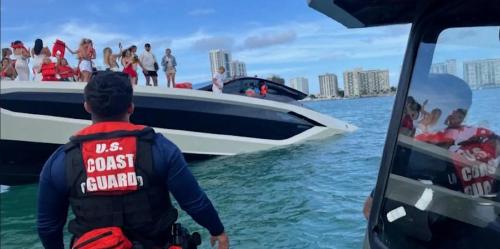As boat enthusiasts, we’ve witnessed the rise and fall of various marine innovators. Pure Watercraft, once a shining star in the electric boat market, has ceased operations. Let’s dive into the factors that contributed to its demise and explore what this means for the future of electric boating, drawing parallels with the electric vehicle (EV) car industry.
A Promising Start
Pure Watercraft’s electric outboard motor debuted to great fanfare, boasting:
- Zero emissions
- Reduced noise pollution
- Lower maintenance costs
- Increased efficiency
Founder Andy Rebele’s vision resonated with eco-conscious boaters and early adopters. The company’s $37.5 million funding round in 2019 seemed to solidify its position as a leader in electric propulsion.
Challenges on the Horizon
Despite initial success, Pure Watercraft faced significant headwinds:
- Established Competition: Traditional boat manufacturers like Yamaha, Mercury, and Brunswick Corporation entered the electric market, leveraging their vast resources and networks.
- Scalability and Quality Control: Rapid growth strained Pure Watercraft’s production capabilities, affecting reliability and customer satisfaction.
- Regulatory Compliance: Navigating complex marine regulations, particularly electrical safety and lithium-ion battery standards, proved daunting.
- Financial Pressures: Burning through investment funding quickly, Pure Watercraft struggled to secure subsequent funding.
Parallels with the EV Car Industry
The struggles faced by Pure Watercraft echo those experienced by early EV car manufacturers:
- Tesla’s Early Struggles: Recall Tesla’s 2008 financial crisis, where the company teetered on bankruptcy before securing vital funding.
- Fisker Automotive’s Demise: Fisker’s 2013 bankruptcy, due to production and financial issues, serves as a cautionary tale.
- Rivian’s Growing Pains: Rivian’s recent recalls and production challenges highlight the difficulties in scaling electric vehicle manufacturing.
Key Takeaways for Boat Enthusiasts
The Pure Watercraft story serves as a reminder:
- Innovation Requires Persistence: Electric propulsion’s potential remains vast, but companies must adapt and overcome challenges.
- Market Demand Drives Adoption: Boaters’ willingness to adopt electric technology will dictate the market’s growth.
- Collaboration Fuels Progress: Industry partnerships can accelerate innovation and drive down costs.
- Lessons from EV Cars: Electric boating can learn from the EV car industry’s successes and setbacks, particularly in battery technology and charging infrastructure.
The Future of Electric Boating
While Pure Watercraft’s demise is unfortunate, it:
- Clears the Way for New Players: Innovative companies can learn from Pure Watercraft’s experiences and fill the gap.
- Highlights Industry Challenges: Addressing regulatory, scalability, and financial hurdles will be crucial for future success.
- Emphasizes Boater Education: Raising awareness about electric propulsion’s benefits and limitations will drive adoption.
As boat enthusiasts, let’s continue to advocate for sustainable, innovative solutions. The electric boat market’s growth depends on our support and willingness to embrace change.




Use the share button below if you liked it.